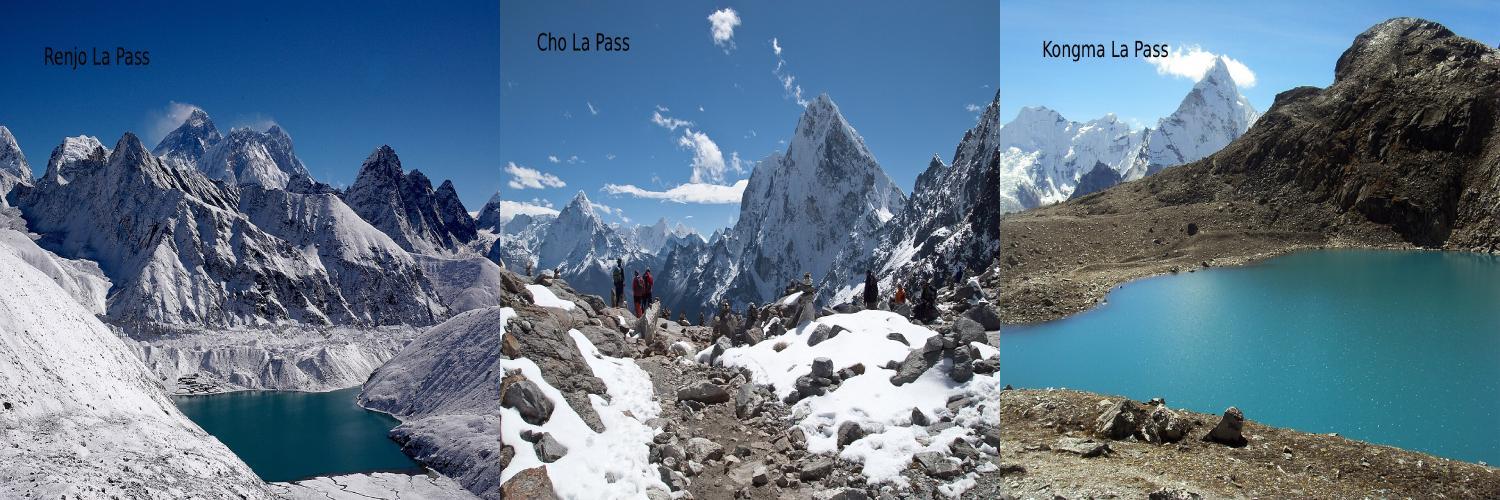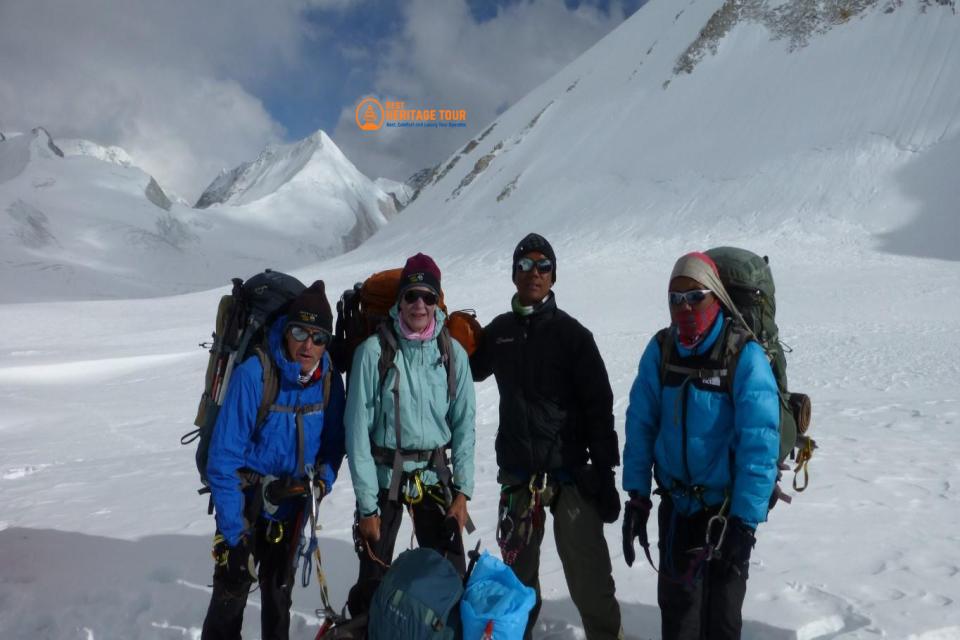The Everest Three Passes Trek is one of the most challenging and rewarding treks in Nepal, combining the beauty of Everest Base Camp, Gokyo Lakes, and three high passes: Renjo La, Cho La, and Kongma La. This trek offers unparalleled panoramic views, glacial landscapes, and the thrill of conquering multiple high-altitude passes above 5,000 meters.
But if you’re planning your adventure during December to February, a common question arises:
“Will the Three Passes trek be too tough during the winter months?”
In this blog, we’ll explore the weather conditions, trail challenges, safety considerations, and preparation tips for trekking in winter. We’ll also discuss why booking with Best Heritage Tour makes your winter adventure safe, organized, and unforgettable.
Understanding the Three Passes Trek
Trek Overview
-
Duration: 16-20 days (depending on itinerary)
-
Maximum Altitude: Cho La Pass at 5,420m
-
Trail Highlights: Lukla → Namche Bazaar → Gokyo Lakes → Renjo La → Cho La → Everest Base Camp → Kongma La → Lobuche → Dingboche → Lukla
-
Difficulty: Strenuous due to multiple passes, altitude, and long trekking days
Why December to February is Special
-
This is the peak winter season in Nepal.
-
Trails are less crowded, offering solitude and pristine landscapes.
-
Snow-covered peaks and frozen lakes create breathtaking scenery.
However, winter also brings harsh weather, icy trails, and cold temperatures, which require careful planning.
Weather Conditions from December to February
Temperature Ranges
-
Daytime: -2°C to 8°C in lower villages (Namche, Gokyo)
-
Nighttime: -10°C to -20°C at higher camps (Dingboche, Lobuche, near passes)
-
High Passes: Temperatures can drop below -25°C in strong winds
Snow & Ice Conditions
-
Most passes will have deep snow or icy sections, particularly Cho La and Kongma La.
-
Trail visibility can be affected by snowstorms or heavy clouds.
-
Frozen lakes and glaciers increase the technical difficulty of the trek.
Pros of Winter Trekking
-
Clear skies with unobstructed mountain views
-
Fewer crowds on the trail and in tea houses
-
Stunning snow-covered landscapes and photo opportunities
Cons of Winter Trekking
-
Harsh cold, especially at night and high altitudes
-
Shorter daylight hours (10–11 hours)
-
Higher risk of frostbite or cold-related injuries
-
Certain tea houses may be closed or have limited facilities
Why December to February Can Be Tough
a) High Altitude Challenges
-
Winter accentuates altitude fatigue, as your body works harder to stay warm.
-
Multiple passes require early starts, sometimes in sub-zero temperatures.
b) Trail Conditions
-
Snow and ice make ascents and descents slippery.
-
Crossing glaciers may require crampons or ice axe, depending on conditions.
-
Some trails may be partially blocked due to snowfall, requiring detours or longer days.
c) Physical Fitness
-
Winter trekking demands excellent stamina and endurance.
-
Trekkers should be trained for long days, heavy packs, and walking on snow.
Gear and Preparation for Winter
To tackle the Three Passes trek from December to February, gear and preparation are critical:
Clothing
-
Layering system: Thermal base layers, fleece or down mid-layers, waterproof outer layers
-
Gloves & hats: Insulated gloves, balaclava, and warm beanies
-
Socks & boots: Thick wool socks and insulated high-altitude boots
Equipment
-
Trekking poles: Essential for icy or snowy trails
-
Crampons or microspikes: Necessary for steep icy passes
-
Sleeping bag: Rated for -20°C or lower
-
Headlamp: Short winter days require trekking before sunrise
Health & Safety
-
Acclimatization: Take proper rest days to avoid altitude sickness
-
Hydration: Cold air increases water loss; insulated water bottles prevent freezing
-
Nutrition: High-calorie meals and snacks for energy
Why Some Trekkers Prefer Winter
Despite the toughness, winter trekking has advantages:
-
Solitude: Fewer trekkers create a peaceful experience
-
Photography: Clear skies, snow-covered peaks, and frozen lakes
-
Adventure: Conquering the passes in winter gives a sense of accomplishment
-
Lower Costs: Off-season flights and accommodations can be cheaper
Challenges & Risks
|
Challenge |
Winter Impact |
Mitigation |
|---|---|---|
|
Cold temperatures |
Frostbite, hypothermia |
Layering, insulated gear, proper sleeping bag |
|
Snow & ice |
Slippery trails, slower pace |
Crampons, trekking poles, guide assistance |
|
Shorter daylight |
Less trekking time per day |
Early starts, planned rest stops |
|
Limited tea house facilities |
Closed or reduced services |
Carry extra snacks, check with trekking company |
|
Altitude sickness |
Worse due to cold and exertion |
Acclimatization days, proper hydration |
Tips for a Successful Winter Three Passes Trek
-
Hire a Licensed Guide: Winter trails are more technical; guides from Best Heritage Tour improve safety.
-
Pack Smart: Focus on warmth, durability, and lightweight essentials.
-
Start Early: Take advantage of daylight and firmer snow in the mornings.
-
Acclimatize: Spend extra days in Namche, Dole, or Gokyo for better adaptation.
-
Monitor Weather: Avoid trekking during snowstorms or high winds.
-
Emergency Plan: Carry a satellite phone or know tea houses with WiFi/emergency contact.
Why Book with Best Heritage Tour
Trekking the Three Passes in December to February is challenging, but Best Heritage Tour ensures a safe and well-organized adventure:
-
Experienced Guides: Navigate winter conditions, advise on crampons, poles, and safe routes.
-
Complete Logistics: Permits, accommodation, meals, and domestic flights are arranged.
-
High-Altitude Expertise: Guides monitor your health and acclimatization.
-
Emergency Preparedness: Support for sudden weather changes or altitude issues.
-
Tailored Itineraries: Flexible schedules to suit winter daylight hours and weather conditions.
Booking with Best Heritage Tour transforms a tough winter trek into a safe, memorable, and rewarding journey.
Conclusion
So, is December to February going to be tough for the Three Passes Trek?
-
Yes, winter trekking is physically demanding and technically challenging, with icy trails, freezing temperatures, and shorter days.
-
However, for prepared, experienced, and guided trekkers, it offers stunning scenery, solitude, and an unforgettable adventure.
-
Proper gear, acclimatization, and guidance from a trusted company like Best Heritage Tour make winter trekking safe and achievable.
Book Your Winter Three Passes Trek with Best Heritage Tour
Phone: +977-9851149197 / +977-9810043046
Email: info@bestheritagetour.com / bestheritagetour@gmail.com
Website: www.bestheritagetour.com
Office: Thamel Marg, Kathmandu, Nepal
Don’t let winter challenges hold you back - embrace the thrill and beauty of the Everest Three Passes Trek with expert guidance from Best Heritage Tour.
Author: Best Heritage Tour
Date: 24th August, 2025


